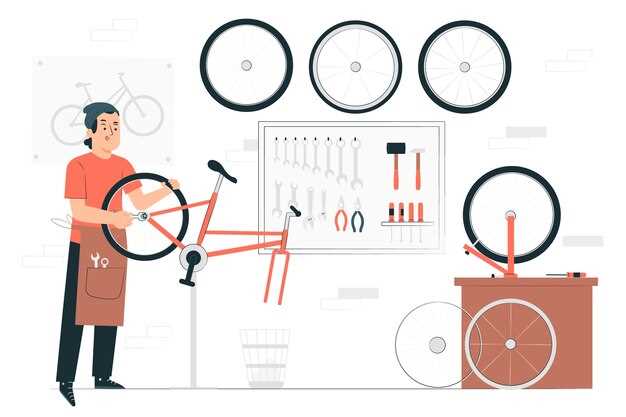
Having a loose steering wheel can significantly impact your driving experience and safety. It may lead to uncertain handling and increased risk of accidents if not addressed promptly. Whether it’s due to worn-out components, improper installation, or general wear and tear, fixing a loose steering wheel is a task that can often be accomplished with some basic tools and knowledge.
This guide will take you through the necessary steps to diagnose and fix the issue. You will learn how to identify the root cause of the looseness and apply appropriate solutions to ensure your steering system operates effectively and safely. Each step will provide clear instructions, making the process accessible for both novice and experienced DIYers.
By following this step-by-step guide, you can restore the integrity of your steering wheel, enhance your vehicle’s handling, and ensure a safer ride. Let’s delve into the common causes of a loose steering wheel and the solutions that can be employed to rectify the situation.
Identifying the Cause of the Loose Steering Wheel
To properly address a loose steering wheel, it is essential to identify its underlying cause. Several factors can contribute to this issue, and understanding them can help in determining the appropriate solution.
First, inspect the steering linkage components. Wear and tear on parts such as tie rods, control arms, and ball joints can lead to a loose connection. If these components are worn or damaged, they may allow excessive movement, resulting in a loose feeling in the steering wheel.
Next, evaluate the condition of the steering column. Loose bolts or fittings within the column can also cause instability. Make sure to check for any signs of damage or misalignment, as these can make steering less responsive and more difficult to control.
An additional area to investigate is the power steering system. Low power steering fluid levels or a failing power steering pump can contribute to a loose steering wheel. Inspect for leaks in the system, and ensure that the fluid is at the correct level. A malfunctioning pump may fail to provide adequate pressure, leading to a lack of feedback in the steering wheel.
It is also important to consider the vehicle’s alignment. Misaligned wheels can create uneven wear on tires and suspension components, which can, in turn, affect steering stability. A proper wheel alignment can enhance the handling of the vehicle and reduce the sensation of looseness in the steering wheel.
Finally, check the condition of the steering wheel itself. Loose or damaged steering wheel components such as the steering wheel nut or retaining clip can lead to a disconnect between the steering wheel and the steering column. Ensuring these components are secure is crucial for safe handling.
In summary, identifying the cause of a loose steering wheel involves examining the steering linkage, steering column, power steering system, alignment, and the steering wheel itself. Each of these areas plays a crucial role in overall steering performance, and addressing the specific issue can restore control and stability.
Gathering the Necessary Tools for Repair

To successfully fix a loose steering wheel, it’s essential to gather the right tools before starting the repair process. Having everything at hand will save time and ensure a smoother workflow.
1. Socket Set: A comprehensive socket set is crucial for removing and tightening various nuts and bolts. Look for a set that contains both metric and imperial sizes to cover a range of vehicles.
2. Screwdriver Set: You’ll need a set of screwdrivers with different sizes and types, including flathead and Phillips. These will help you tackle the screws holding the steering wheel components in place.
3. Torque Wrench: A torque wrench is vital for ensuring that bolts are tightened to the manufacturer’s specifications. This tool prevents over-tightening, which can lead to further issues.
4. Pliers: A pair of pliers can be helpful for gripping and twisting wires or small components. Needle-nose pliers provide extra reach in tight spaces.
5. Steering Wheel Puller: If the steering wheel is particularly stuck, a steering wheel puller may be necessary. This tool allows for safe and effective removal without damaging the wheel or its connections.
6. Multimeter: If electrical connections are involved, a multimeter will help diagnose any issues with wiring or power supply to the steering components.
7. Cleaning Supplies: Keep some cleaning supplies on hand, such as rags and degreasers. Cleaning the area around the steering column can make it easier to work and prevent dirt from entering sensitive components.
8. Safety Gear: Don’t forget to wear safety glasses and gloves to protect yourself while working. Safety should always be a priority during any repair process.
Gathering these tools beforehand will ensure that you are prepared for the repair, minimizing delays and maximizing efficiency in fixing your loose steering wheel.
Accessing the Steering Column Safely
Before attempting to fix a loose steering wheel, it is crucial to safely access the steering column. This ensures both your safety and the integrity of the vehicle’s components. Follow these steps carefully:
-
Gather Necessary Tools: Before starting, make sure you have the following tools:
- Screwdrivers (flathead and Phillips)
- Socket set
- Torque wrench
- Steering wheel puller (if necessary)
- Safety gloves and goggles
-
Disconnect the Battery: To prevent any electrical short and ensure safety, disconnect the negative terminal of the battery.
-
Remove Airbag (if applicable): If your vehicle has an airbag in the steering wheel, follow these steps:
- Consult the vehicle’s manual for specific airbag removal instructions.
- Carefully detach the airbag connectors.
- Store the airbag in a safe location away from heat sources.
-
Remove the Steering Wheel: If necessary for your repair:
- Locate and remove the central nut holding the steering wheel.
- Use a steering wheel puller to safely detach the wheel from the column.
-
Access the Steering Column: With the steering wheel removed, you can now access the steering column:
- Unscrew any column covers to expose internal components.
- Carefully inspect the column for loose parts or damaged components.
-
Handle Components with Care: While you are working inside the steering column:
- Avoid pulling or tugging on wires and connectors.
- Keep track of all screws and small parts to ensure they are reattached correctly.
- Be cautious of any springs or mechanisms that may be under tension.
-
Reassemble with Caution: Once repairs are complete, reverse the dismantling process:
- Reattach the column covers and secure them with screws.
- If the steering wheel was removed, carefully align it and secure it with the central nut.
-
Reconnect the Battery: Finally, connect the negative terminal of the battery and check that all systems are operational.
By following these steps, you ensure a safe and efficient process to access the steering column. Always refer to your vehicle’s manual for specific details relating to your particular model.
Tightening the Steering Wheel Components
To ensure a stable and responsive steering experience, it is essential to appropriately tighten the components of the steering wheel. Follow these step-by-step instructions to achieve a secure fit.
First, gather the necessary tools, including a socket wrench, screwdrivers, and a torque wrench if available. Before beginning, ensure the vehicle is parked on a level surface and the ignition is off.
Next, remove the steering wheel cover or airbag assembly, if applicable. This may involve unscrewing several bolts located at the back of the steering wheel. Be cautious during this step to avoid damaging any wiring connections.
Once the cover is removed, examine the steering wheel’s retaining nut, which secures the wheel to the steering column. Use the socket wrench to check the tightness of this nut. If it is loose, tighten it to the manufacturer’s specified torque using the torque wrench for accuracy. This will provide the necessary grip and prevent wobbling.
In addition to the retaining nut, inspect the screws and bolts that secure the steering control components, such as the turn signal and horn mechanisms. Tighten any loose screws with the appropriate screwdriver. This will not only enhance the stability of the steering wheel but also improve the overall functionality of the controls.
After tightening all components, reattach the steering wheel cover or airbag assembly, ensuring that all connections are secure. Finally, test the steering wheel for any play by turning it gently side to side. If everything feels firm, your steering wheel components are now properly tightened.
Regular maintenance of the steering system is crucial for safe driving, so consider checking the tightness of these components periodically.
Testing the Repair for Proper Functionality
Once you have completed the repairs on the steering wheel, it is crucial to test the functionality to ensure everything is working correctly. Begin by reattaching the steering wheel to the vehicle, making sure all bolts are tightened to the manufacturer’s specifications. This step is essential to avoid any further looseness while driving.
Next, sit in the driver’s seat and grip the steering wheel. Check for any unusual movement by gently shaking it back and forth. There should be no significant play or wobble; a well-fixed steering wheel should feel solid and secure. If there is still looseness, you may need to revisit the repair process to identify any overlooked issues.
After confirming the steering wheel is stationary, start the engine and turn the wheel from side to side to assess its responsiveness. Pay attention to any grinding noises or resistance, which could indicate additional problems within the steering system. The wheel should turn smoothly without sticking, ensuring a comfortable driving experience.
Finally, take the vehicle for a short test drive in a safe environment. Pay close attention to how the steering behaves at various speeds and during sharp turns. If the repair is successful, you should experience stable control without any unusual vibrations or sounds. Perform some emergency stops and evasive maneuvers to further test the steering performance under stress.
If everything functions properly during these evaluations, your repair can be considered successful. Always remember to prioritize safety; if any issues persist, consult a professional mechanic for a thorough inspection.
Maintaining Steering Wheel Stability Over Time
Ensuring the stability of your steering wheel is essential for safe driving and overall vehicle performance. Several practices can help maintain this stability long-term.
Firstly, regular inspections are crucial. Examine the steering components, including the steering column and linkage, for any signs of wear or damage. Pay attention to loose screws, worn bushings, and any unusual noises during steering.
Secondly, maintenance of the steering fluid is vital. Check the fluid level periodically and ensure it is clean. Contaminated or low fluid can lead to increased friction and instability in the steering system. Replace the fluid as recommended in your vehicle’s manual.
Tire maintenance also plays a significant role in steering stability. Ensure tires are properly inflated and aligned. Uneven tire wear can lead to steering pull and instability, so rotate tires regularly and adjust the alignment as necessary.
Additionally, address suspension issues promptly. Worn suspension components, such as struts and shocks, can affect steering precision. Check these parts and replace them if any damage is found to prevent further steering instability.
Driving habits can contribute to steering wheel stability as well. Avoid making sharp turns at high speeds or driving over potholes aggressively. Smooth driving can prolong the life of steering components and maintain proper wheel alignment.
Lastly, consult a professional if you notice any persistent steering issues. A mechanic can diagnose underlying problems that may not be visible during routine checks. Regular professional maintenance can significantly enhance the long-term stability of your steering wheel.















